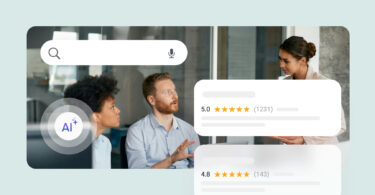Are your social media posts met with deafening silence? Do you think your efforts are lost even after sharing post after post? You’re not alone. Many businesses struggle to spark meaningful social media engagement as their posts go unnoticed.
Here’s the problem: silence means invisibility. Potential customers are actively searching for businesses like yours, but without engagement, they’ll pass by you.
Maybe your content needs to spark engagement, or your posting schedule needs to be consistent. Whatever the reason, your social media strategy isn't turning those likes into leads.
This guide is your roadmap to building a tight-knit online community. We’ll show you how to unlock social media engagement on autopilot, transforming your quiet corner into a bustling, constant stream of likes, comments, and sales.
Let’s turn your social media into a lead-generation machine.
Table of contents
- What is social media engagement?
- Why is social media engagement important for your business?
- How to measure social media engagement?
- How to monitor social media engagement?
- How to increase social media engagement?
- 5 Social media hacks to ignite engagement
- Frequently asked questions on social media engagement
- Boost your social media engagement with Birdeye
What is social media engagement?
Social media engagement is the practice of measuring how your audience interacts with your content on platforms like Facebook, Instagram, LinkedIn, Reddit, etc.
Imagine it like the “likes” you get in real-life conversations. The more people ask questions or share their thoughts, the more interesting the conversation becomes.
So, what are these “engagements” on social media?
They come in many forms, and each one shows your audience is interested and wants to participate:
- Likes, hearts, thumbs up, and other reaction buttons: These are the basic building blocks of engagement. They show your content is resonating with your audience in some way.
- Comments: This is where the conversation really starts! People can share their thoughts, ask questions, or simply express their opinions. Responding to comments shows you’re listening and builds stronger relationships.
- Shares and retweets: When someone shares your content with their network, it spreads the word and introduces you to a new audience. Imagine a friend recommending a great restaurant—that’s the power of a share!
- Direct messages (DMs): DMs allow for private, one-on-one conversations with your audience. They’re a great way to provide personalized customer service or answer questions in more detail.
- Mentions and tags: If someone mentions your brand name (@YourBrand) or tags you in a post, it shows they’re thinking about you and want to connect directly. Respond to these mentions to show you appreciate their interaction.
- Replies: Responding to someone’s comment or mention shows you’re listening and interested in their thoughts. This two-way communication builds a stronger connection with your audience.
The more of these “engagement types” you see, the better. It means your content sparks conversation and builds a real connection with your audience.
Turn Likes into $$$: How to Boost Social Media Engagement & Sales
Want to see the impact of Birdeye on your business? Watch the Free Demo Now.
Why is social media engagement important for your business?
Social media platforms have come a long way from their humble beginnings as a place to share funny videos and connect with old classmates. Today, they’re a bustling digital marketplace where people don’t just hang out—they research, shop, and interact with brands. But you might wonder: Is all this social media buzz worth your time and effort?
According to recent studies, the average person spends over two hours a day scrolling through their feeds. But they’re not just there for entertainment. They’re looking for recommendations, reading reviews, and discovering businesses like yours.
Why the shift? It’s simple: convenience and trust.
Social media provides a direct line to brands, offering instant information and customer service. It’s where people go to get a feel for a company’s personality, values, and reliability. They’re essentially window shopping from the comfort of their couch, and your social media presence is that window display.
Must read: What’s social media customer service and how it is changing the way customers interact with a brand
So, while cat videos still have their place, social media has evolved into a powerful tool that can significantly impact your business’s success.
The real question is no longer “Should I be on social media?” but “Can I afford not to be?”
Now that we've established why people are flocking to social media, let's dive into why engaging with them is crucial. It's not just about racking up likes and shares (though those are nice). It's about building a community around your brand. Let's break down the benefits:
Generate a higher brand awareness
Remember the old saying, “It’s not what you know, it’s who you know”? In the social media world, it’s more like, “It’s not who you know, it’s who knows you.”
Whenever someone interacts with your content, whether it’s a like, comment, or share, they give you a digital thumbs up. And guess what? Social media algorithms love that stuff. The more engagement you get, the more the algorithm shows your content to new eyeballs.
Take Wendy's Twitter account. Their sassy, quick-witted responses have turned them into social media legends. They're not just selling burgers; they're serving up entertainment that people can't wait to share.
Open a feedback channel
Imagine having a focus group at your fingertips 24/7. Social media engagement offers the same thing. It’s like having an ongoing conversation with your customers, where they tell you exactly what they love (or don’t love) about your product or service.
Take Birdeye, the highest-rated all-in-one reputation and customer experience platform trusted by over 150,000 businesses. And we practice what we preach. We actively engage with our audience on platforms like LinkedIn and Facebook, responding to queries and feedback. This two-way communication helps us improve our product and showcases our commitment to customer satisfaction in real-time.
Psst… Did you know Birdeye VIEW 2024 is back? Register today for this 2-day virtual conference to know how your business can gain a competitive edge through AI innovation.
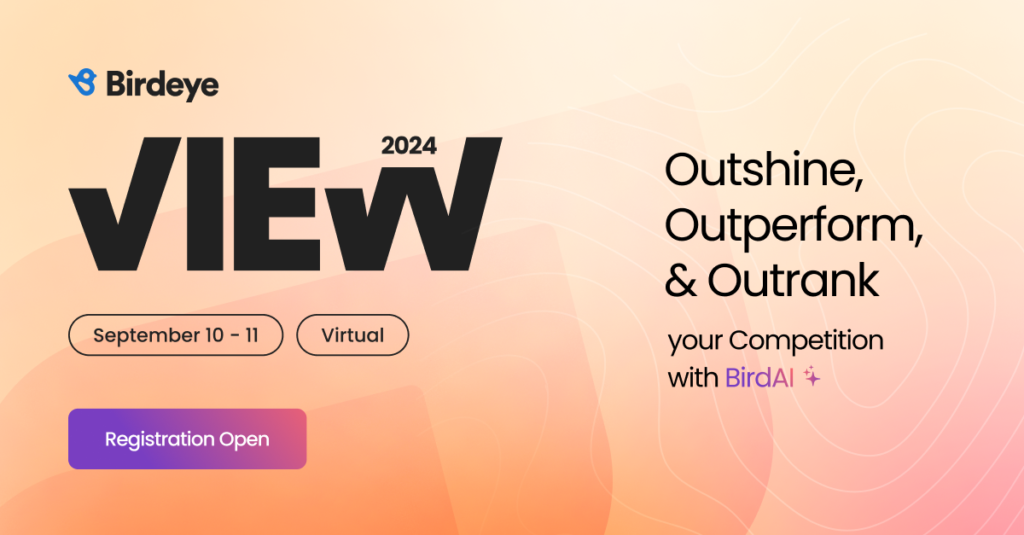
Acquire relevant audience
When people engage with your content, it signals to their network that you’re worth checking out. Before you know it, you’ve got a growing audience interested in what you offer.
You know you have reached your target audience when they interact with your content consistently.
Glossier, the beauty brand, built its empire on Instagram. By engaging with their audience and encouraging user-generated content, they've created a community of loyal fans who buy their products and act as brand ambassadors.
Build a stronger sales pipeline
Ok, here’s the truth: We’re all in business to make money, right? Well, here’s the good news: A higher engagement rate is like laying out a red carpet that leads straight to your cash register.
Did you know the 12 ways to use AI in sales in 2024?
It gives you more opportunities to interact with potential customers, answer their questions, and guide them toward purchasing.
While Birdeye doesn’t directly sell products on social media, we use our engagement strategy to showcase customer success stories and product features. This approach helps us to nurture leads and drive interest in our products.
We often share tips and insights to build trust with potential customers, which automatically strengthens our reputation with our customers. Ṁ
Social media engagement isn't just about collecting likes and followers like they're Pokémon. It's about building relationships, understanding your customers, and creating a community around your brand.
We know that running your business is challenging enough. Only a social media manager could tell you how managing an A-1 social media reputation could be time-consuming.
But this is made super easy with Birdeye Social
Its AI-powered social engagement platform empowers you to manage multiple social profiles across different platforms from a single dashboard so you can:
✅Schedule posts in advance ✅Maintain a consistent presence without being glued to your screen 24/7 ✅Stay on top of mentions, comments, and messages across all platforms ✅Discover and share relevant industry content to keep your feed fresh and engaging ✅ Use AI to create content that helps maintain an active presence even when you're short on original content ✅Use royalty-free images and hashtags to make your content more relatable ✅Track performance metrics across all your social accounts ✅Gain insights to refine your strategy and boost engagement ✅Sync your social media efforts with your overall online reputation management
All this and more to ensure no engagement opportunity falls through the cracks!
So, the next time you’re tempted to skip responding to or ignore that comment, think again. That small interaction could be the first step towards turning a casual scroller into a loyal customer!
How to measure social media engagement?
Every business has a certain share of uncertainty regarding its social media engagement. With platforms tweaking algorithms too often and fluctuating audience behavior, it’s hard to know if you are going the right way.
Monitoring and measuring your engagement can help you understand your position and take steps to improve as needed.
Let’s break down how to measure social media engagement:
1. Engagement rate
Think of engagement rate as the pulse of your social media presence. It tells you how much your audience interacts with your content relative to your follower count. Here’s the basic formula:

Calculate your engagement rate with our calculator:
Social Media Engagement Rate Calculator
But what counts as an engagement? Typically, it includes:
- Likes
- Comments
- Shares
- Saves (on platforms like Instagram)
- Clicks (on links in your posts)
Pro tip: A good engagement rate varies by platform, but anything above 1-2% is considered solid for most businesses.
Must check: 10 customizable social media post templates your customers can’t scroll past
2. Comments
Sure, many comments look great, but what are people actually saying? Are they asking questions? Sharing experiences? Or just dropping emojis?
Dive into your comments section. Look for:
- Thoughtful responses
- Questions about your products or services
- User-generated content (like customers sharing photos with your product)
These are gold mines for understanding your audience and improving your offerings.
3. Shares
Undoubtedly, it is the ultimate compliment. When someone shares your content, they’re essentially giving you their seal of approval. It’s like they’re saying, “Hey, my friends need to see this!” Keep an eye on:
- Which types of content get shared most often
- Who’s sharing your content (customers, influencers, other businesses?)
This can guide your content strategy and help you identify potential collaborations.
Here’s a formula to track your shares rate:

Calculate your content’s share rate:
4. Click-Through Rate (CTR)
If you include links in your posts (and you should!), CTR is crucial. It shows how many people were intrigued enough by your post to actually click through to your website or landing page.
Here’s a formula:
CTR = (Number of Clicks / Number of Impressions) x 100
A high CTR means your content’s social media reach is engaging and compelling enough to drive action.
5. Audience growth rate
While follower count alone can be a vanity metric, your audience growth rate tells a more interesting story. It shows how quickly your audience is expanding.
Here’s a formula to calculate audience growth rate % =
(New Followers / Total Followers) x 100
Quickly assess and visualize your social media audience engagement:
Social Media Audience Rate Calculator
Audience Engagement Visualization
Tips to Improve Audience Rate
Calculate this monthly or quarterly to spot trends. A steady growth rate is a good sign that your content resonates with your target audience.
6. Brand mentions
Are people talking about you even when you're not in the room? Use social listening tools to track mentions of your brand across social media. This includes:
- Direct mentions (using your handle)
- Indirect mentions (just your brand name)
- Relevant hashtags
This gives you a broader picture of your brand's presence and sentiment in the social sphere.
7. Response rate and time
In today's fast-paced world, how quickly and consistently you respond to your audience matters. This is the customer service 2.0 Track:
- What percentage of comments/messages do you respond to
- How quickly do you typically respond
Aim for a high response rate and a low response time. Your customers will appreciate the attentiveness.
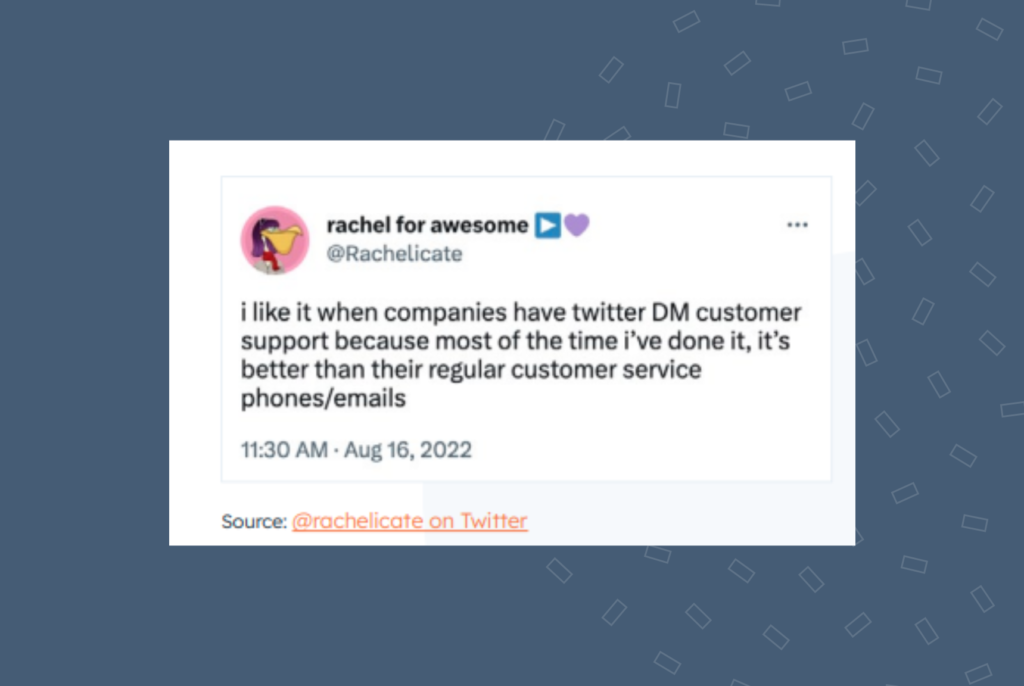
Say goodbye to manual tracking. Today, countless tools are available to streamline your workflow and simplify your life.
Platforms like Birdeye Social can help you track these metrics across multiple platforms, saving you time and providing deeper insights.
So, next time someone asks you how your social media is doing, you can go beyond "We've got X number of followers" and show them the impact you're making – something that’s worth tweeting about.
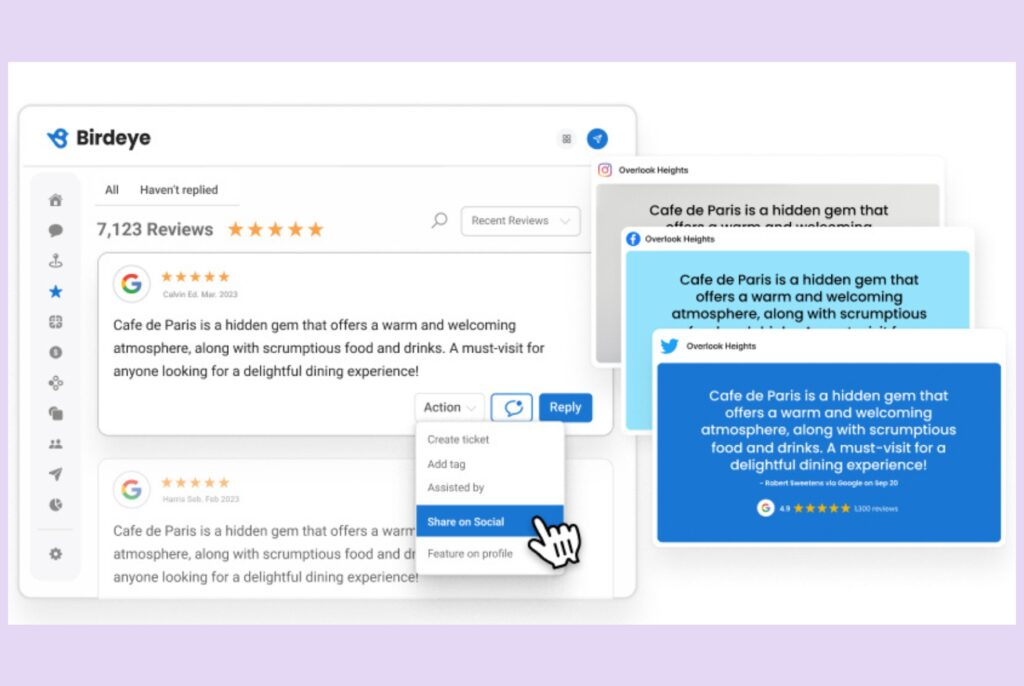
How to monitor social media engagement?
Measuring engagement metrics is only possible when you have the right monitoring methods. Most of the engagement metrics discussed in the above section rely on social media monitoring to give the correct numbers.
So how do you monitor it to measure its impact and growth? Here are a few steps even we at Birdeye follow:
1. Set up real-time alerts
Imagine knowing the moment someone mentions your brand or comments on your post. That's the magic of real-time alerts.
- Set up alerts for brand mentions, specific keywords, and hashtags.
- Prioritize high-impact interactions (like comments from influencers or complaints).
2. Analyze platform analytics
Most platforms offer built-in analytics, but for a more comprehensive view:
- Look at trends over time, not just day-to-day fluctuations
- Pay attention to which types of content drive the most engagement
Pro tip: Birdeye Social offers custom reports that can help you visualize your engagement data and spot trends at a glance.
3. Implement social listening
Social listening goes beyond just tracking mentions of your brand. It's about understanding the conversations happening around your industry.
- Monitor industry-specific hashtags and keywords
- Keep an eye on what people are saying about your competitors
- Identify emerging trends or pain points in your market
4. Audit with your social media manager
A top-notch social media management tool simplifies your social media manager’s life. By regularly checking in with them, you can gain valuable insights like:
- What themes are emerging in customer comments?
- Are there recurring questions or concerns?
- Which posts are generating the most positive (or negative) reactions?
Double down on those which give you the best results.
5. Monitor qualitative data
While numbers are important, don't lose sight of the actual content of the engagement:
- Regularly read through comments and messages
- Look for patterns in feedback or questions
- Pay attention to the sentiment behind the interactions
Related read: A complete guide on social media metrics to track
How to increase social media engagement?
Increasing engagement on your business’s social media pages can help you reap huge benefits from your efforts. From brand awareness to converting potential customers, an active social media page can do it all for your business.
But social media is more complex than it used to be. Algorithms get updated, and consumer preferences change every now and then. And when you have to manage a large business, you have less time and resources but bigger goals. This means the team must up their game quickly and see results.
Follow our expert-recommended strategies to improve your engagement metrics.
Understand your audience
Understanding your audience is crucial because it allows you to create targeted, relevant content that resonates with your followers and more effective social media marketing.
Audience diversity factors:
- Locations
- Age groups
- Income levels
- Buying habits
Benefits of audience understanding:
- Content strategy:
• Tailor content to audience preferences
• Increase engagement and relevance
- Platform optimization:
• Identify the best content types for each platform
• Adapt content to perform well across platforms
Action steps to understand your audience:
- Analyze your audience demographics
- Create audience personas
- Develop platform-specific content strategies
- Regularly review and adjust based on engagement metrics
For example, your follower composition on Twitter may not be the same as that on Instagram. Understanding your audience on each page helps you repurpose content correctly and win over your target audiences.

Identify the best content style for each platform
Tailor your content format and style to each specific social media platform.
Why it matters:
- Each platform favors certain content types in its algorithm
- Using the right format can significantly boost your engagement rate
Platform-specific best practices:
- Instagram, TikTok, Facebook:
• Video content performs well
• Short-form videos are particularly engaging
- Twitter:
• Strong text-based content excels
• Thread format can generate high engagement
- LinkedIn:
• Professional articles and thought leadership pieces
• Infographics and data visualizations
- Pinterest:
• High-quality images and infographics
• DIY and how-to content
Remember:
- Avoid a one-size-fits-all approach
- Adapt your content strategy for each platform
- Consider your audience demographics on each platform
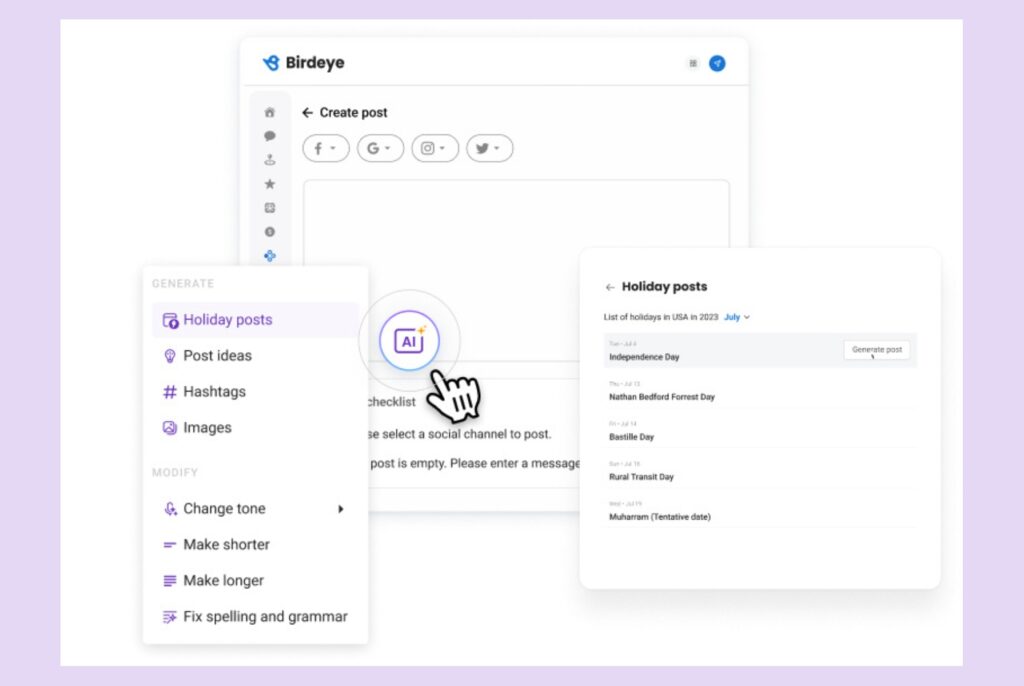
Build a personality
People connect with personality! Here's how to craft a social media persona that breaks through the noise:
- Find your voice: Quirky, playful, informative, or inspirational? Align your online personality with your brand values.
Authenticity builds trust and connection.
- Humanize your brand: Ditch robotic language! Use emojis, conversational style, and humor that fit your brand voice.
It makes your brand relatable and approachable.
- Show, don't tell: Don't just push products. Share stories, behind-the-scenes glimpses, and customer’s social media reviews.
People connect with real experiences.
- Embrace what makes you different: Highlight the quirks that make your brand unique.
Stand out from the crowd and create a memorable brand identity.
- Be passionate: Show genuine enthusiasm about your brand and what you offer. (Why? Passion is contagious and draws people in.)
Bonus tip: Learn from your competitors
- Analyze how they interact with their audience.
- Identify what works for them and what doesn't.
- Find a niche where your brand voice can truly shine.

Use engagement-driving CTAs
Let's face it: You want your audience to do more than just scroll past your fantastic content. You want them to like, comment, share – to engage actively. Here's how clear calls to action (CTAs) can turn viewers into participants:
- Ditch the vague: Don't leave your audience guessing what you want them to do. State your desired action clearly.
- Use variations: Use different CTAs to encourage various interactions.
- "Like this post if you agree!" (Quick and easy engagement)
- "Comment below with your thoughts on this tip!" (Sparks discussions)
- "Tag a friend who needs to see this!" (Expands reach)
Here are a few actionable examples that go beyond basic CTAs that might inspire you:
- "Share your best productivity hack in the comments!" (Promotes user-generated content)
- "Click the link in bio to download our free social media guide!" (Drives traffic to your website)
- "Join us LIVE at 3 PM today! Ask us anything about [your topic]." (Boosts real-time engagement)
Remember: CTAs are most effective with high-quality content. Great content grabs attention, and clear CTAs tell your audience exactly what to do next.
Bonus tip: A/B test different CTAs to see what resonates best with your audience.
Check out our detailed blog on post ideas to generate higher engagement.
Engage with the audience proactively
Social media thrives on conversation! Here's how to stop lurking and actively engage with your audience:
- Respond to comments & messages: It's like saying "thank you" for their interaction. Respond promptly and thoughtfully.
- Embrace UGC: Share posts that mention your brand. It shows you value their voice.
Bonus tip: Repost UGC and tag the creator!
- Go beyond likes & replies:
- Ask follow-up questions to spark deeper conversations.
- Run polls and contests to encourage participation.
- Host live Q&A sessions to connect with your audience in real-time.
You create a sense of community and loyalty by actively engaging with your audience. People feel valued, leading to increased engagement and brand advocacy.
Responding promptly and professionally to negative comments can also turn a situation around.
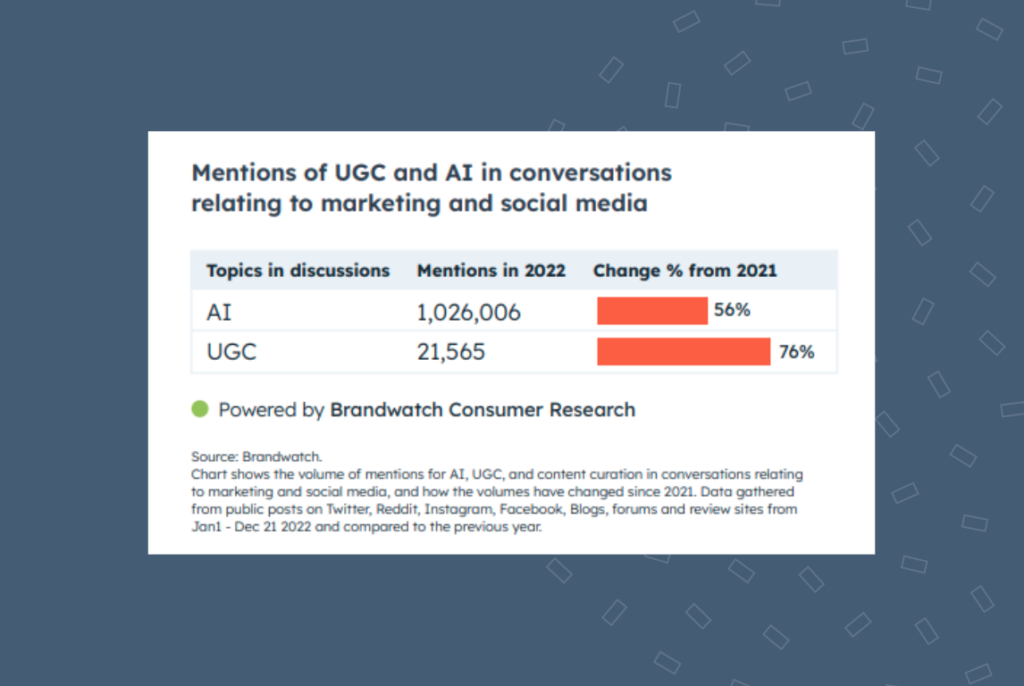
Leverage trends
Social media thrives on what's new! Here's how to leverage trending topics for engagement:
- Be a trend spotter: Monitor trending hashtags and discussions to stay in the know. Look for trending topics on the platforms you use to discover broader conversations.
- Jump in the conversation: Timely content sparks conversation and positions you as a brand that's engaged with current events. Don't wait too long to participate, but ensure your content feels natural and well-thought-out while staying true to your brand voice.
- Focus on quality, not speed: Don't force your brand into every trend. Choose topics that resonate with your audience and offer a unique perspective.

Inauthentic participation can backfire. Focus on quality content that aligns with your brand identity.
Are you using the 12 ways to leverage local social media marketing?
How to stand out from the crowd:
- Offer a unique angle: Don't just mimic the trend. Put your brand's spin on it for a fresh perspective. How can you use the trend to showcase your brand's personality or expertise?
A unique viewpoint grabs attention and makes your content more memorable.
- Use humor or storytelling: Make your content engaging and memorable. Humor or storytelling can be powerful tools to capture attention and connect with your audience on a deeper level.
Entertaining content is more likely to be shared and discussed.
Not every trend is for every business. It’s essential to choose the right social media trends that resonate with your brand’s personality and would be received well by your followers.
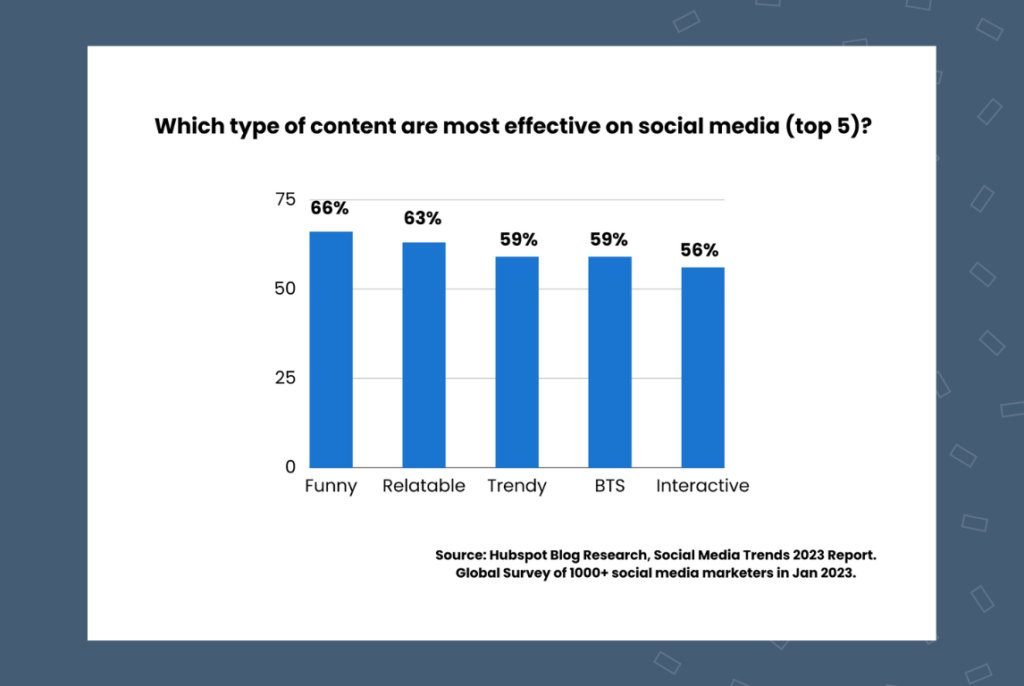
Schedule your content at peak times
Don't publish into the social media void! Schedule your content for peak times to catch your audience when they're most active.
- Tailor your posting times to each platform's active user base. Research the best time to post on each social media platform.
- Plan your social media calendar to stay ahead of schedule as it allows you to strategically target peak times in different time zones.
- Avoid overwhelming your audience with back-to-back posts.
Experiment, analyze, and repeat
If your business has just begun working on social media, it will be a while before you can understand what content brings you the most engagement.
- Experiment with various formats: videos, carousels, memes, educational posts, etc.
- Monitor engagement metrics (likes, comments, shares) to see what resonates.
- Tailor content to platform preferences. People seek humor on Facebook, while Instagram is a platform for brand discovery.
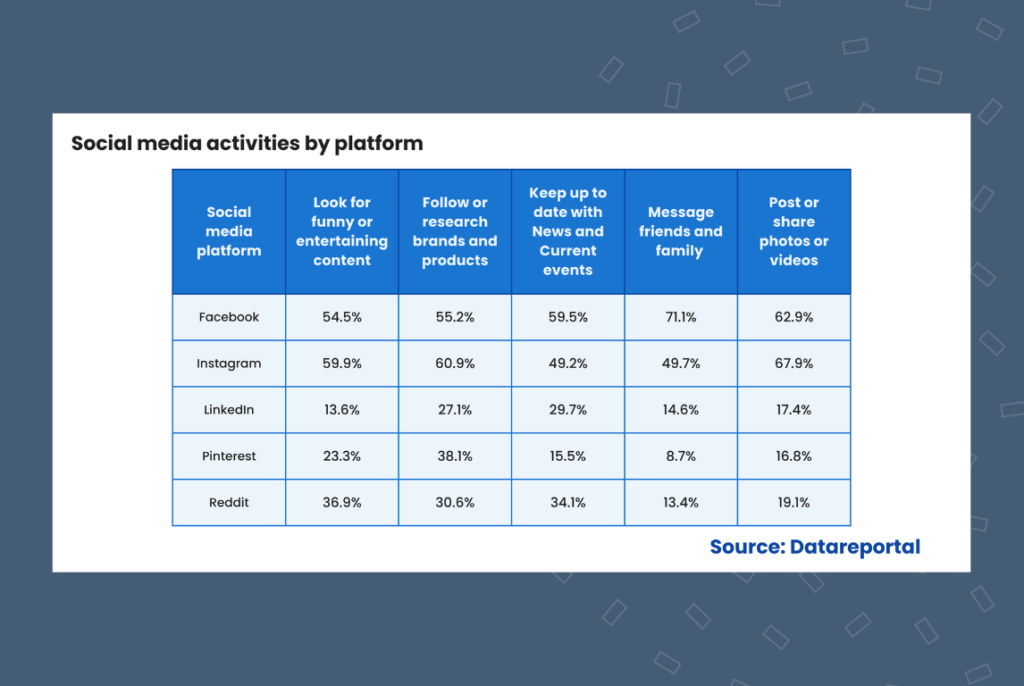
Analyze the engagement and impact of these posts over a period of time to understand what your audience wants from you. And this will differ by platform.
Understand each platform’s requirements, experiment, and repeat the content that resonates with your audience.
5 Social media hacks to ignite engagement
Ditch the tired and old-school strategies with these new social media engagement hacks to improve your brand awareness:
- Host a live AMA (Ask Me Anything) – This format fosters a sense of exclusivity and provides valuable insights directly from the source.
- Gamify your brand – Launch a social media scavenger hunt. Create a series of clues hidden across different platforms, with each clue leads participants closer to a prize or discount code.
- Livestream your product development process – Give your audience a peek behind the curtain and allow them to feel involved in the creative process. Encourage viewers to ask questions and share feedback in real-time.
- Challenge influencers – Instead of sponsoring generic product posts, challenge influencers to create content showcasing your product in a unique way that aligns with their style.
- Do a social media takeover by your mascot. This humanizes your content and make it more relatable with your audience.
5 Don’ts while doing your social media engagement
While engagement is crucial for social media success, some tactics backfire spectacularly. Here are 5 things to avoid in your quest for likes and followers:
| What not to do | Why not |
| Desperate self-promotion | People see through inauthenticity. Constant sales pitches come across as pushy and damage trust. Focus on providing valuable content and building relationships. Let your brand shine naturally through genuine interactions. |
| Jumping on every trend | Not every trend aligns with your brand, and inauthentic participation can damage your brand image. Stay true to your voice and only participate in trends that resonate with your audience and fit your brand personality. |
| Neglecting negative comments | Ignoring unhappy customers screams, "I don't care." Unresolved negativity can snowball and damage your social media reputation management. Respond promptly and professionally, and offer solutions when possible. Show your audience you value their feedback, even if it's critical. |
| Buying followers or engagement | Fake followers don't translate to real brand loyalty. Focus on organic growth and building genuine connections with your target audience. Empty numbers don't impress potential customers or partners. They're looking for real engagement and a community around your brand. |
| Engaging in social media feuds | Public arguments with competitors or influencers make you look unprofessional and immature. Focus on highlighting your brand's strengths and building positive relationships. Social media drama creates reputational risks and alienates potential customers. It creates a negative perception and detracts from your brand message. |
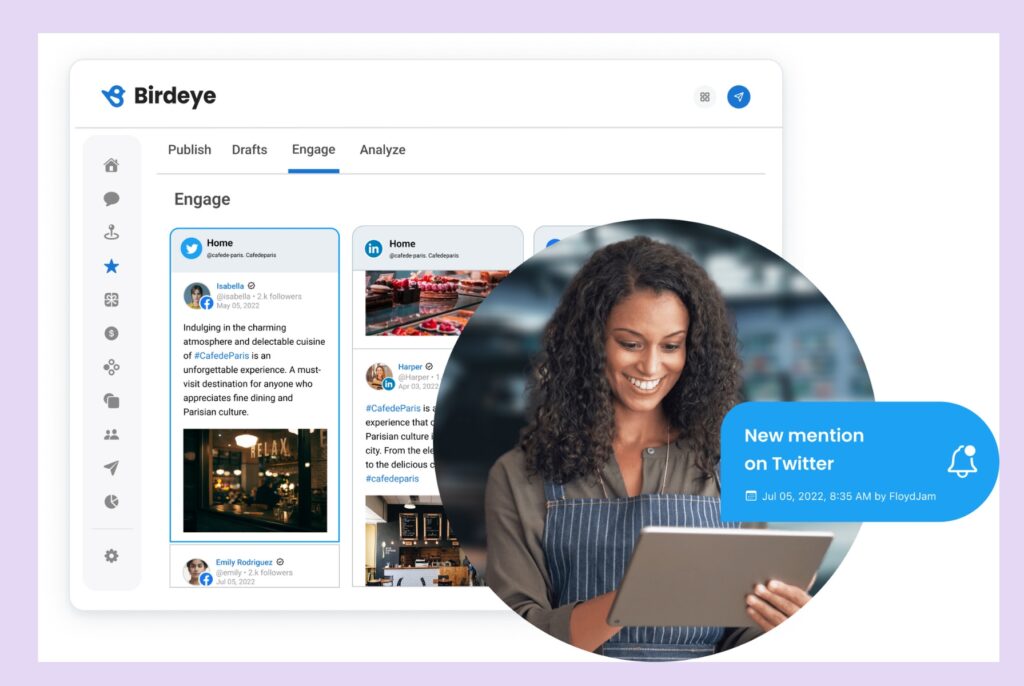
Frequently asked questions on social media engagement
TikTok is the platform with the highest engagement rate of 4.25% as of 2023. Instagram, Facebook, and Twitter follow it.
Brands must focus on creating meaningful and trending content on social media that encourages followers to interact with it. Analyze your best-performing content and replicate the results to engage your audience successfully.
Reach on social media only describes how many feeds your content has reached, while engagement measures the audience interacting with your content.
The five drivers of social media engagement are the connected, network, information, dynamic, and timeliness effects. It describes the different reasons customers would interact with your content.
Video content that is funny, relatable, and engaging gets the most engagement on social media.
Boost your social media engagement with Birdeye
A higher social media engagement can help your business boost its growth, leads, and revenue. To achieve that, you must actively monitor, measure, and innovate to produce engaging social media content across all platforms.
Birdeye Social helps you monitor all your social media accounts, engage with your audience, and track brand mentions from a single dashboard. It also generates customized reports to suit your needs.
Watch our free demo to learn how Birdeye can help you build an engaged audience.

This blog post is part of our Social Media Management Guide
Originally published
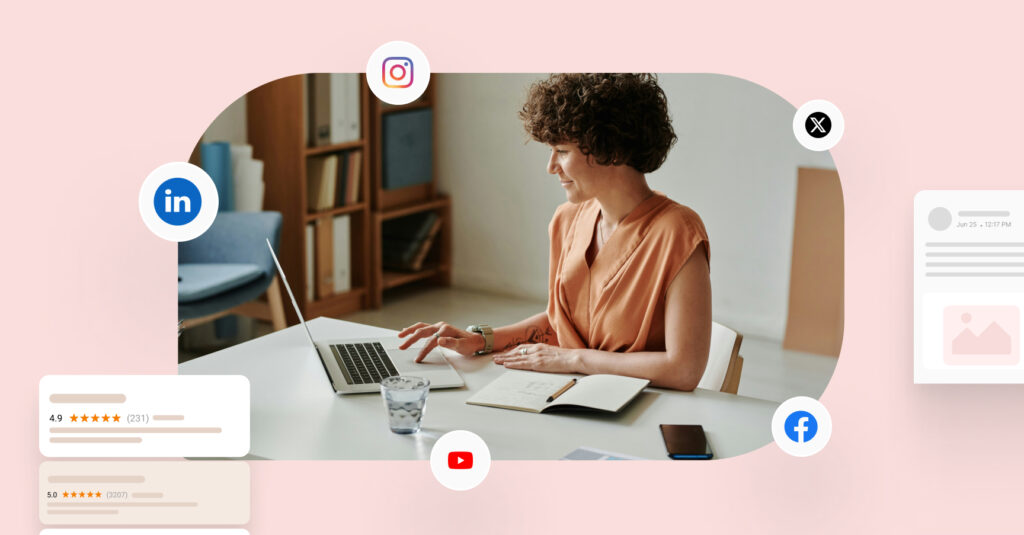

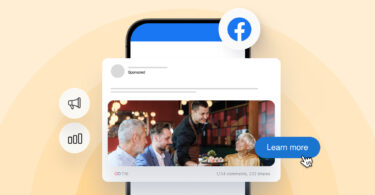

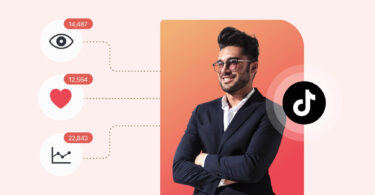

![[Feature image] The best AI tools for business in 2025 A complete guide for productivity, content, and growth](https://birdeye.com/blog/wp-content/uploads/Feature-image-The-best-AI-tools-for-business-in-2025-A-complete-guide-for-productivity-content-and-growth-375x195.jpg)

